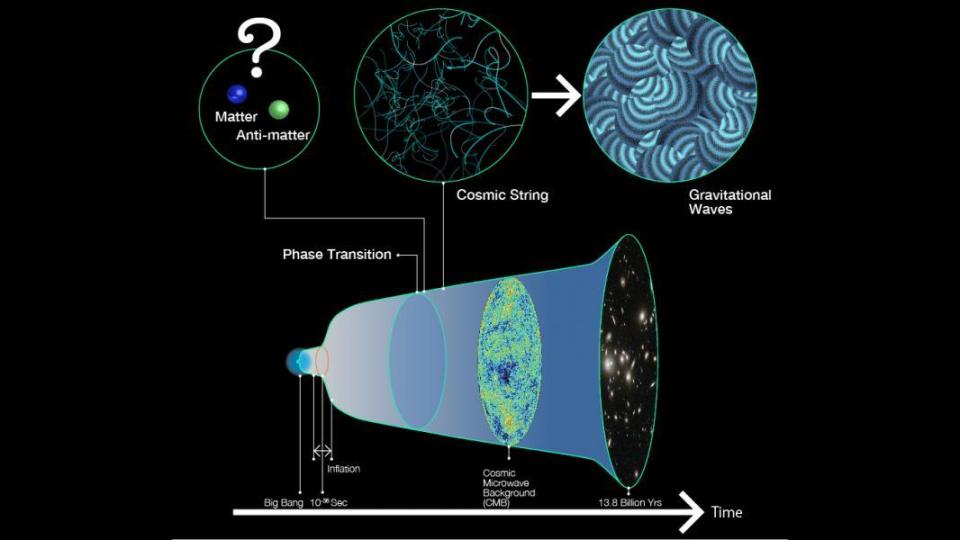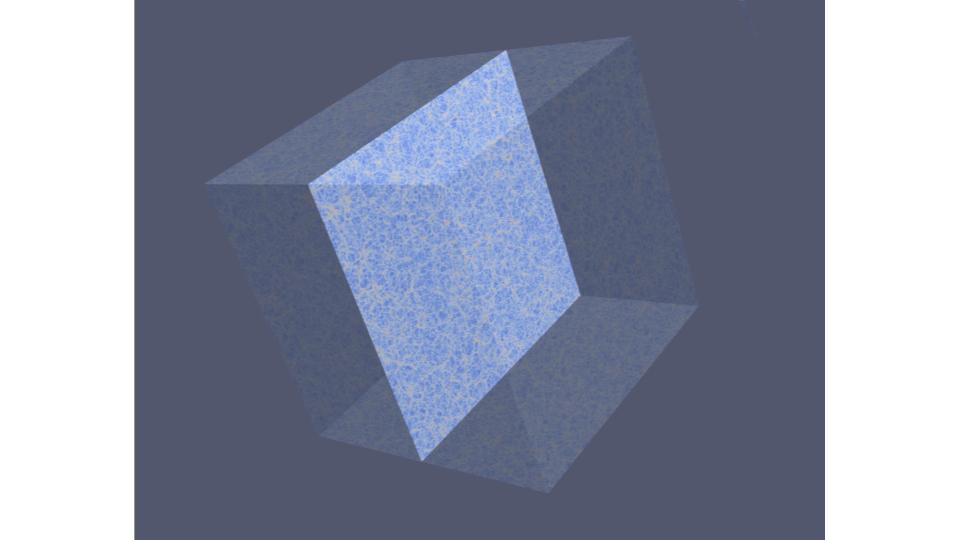Every hard to understand topic in astronomy tried to find its way into today’s episode. Join us and learn how cosmic strings may ultimately be responsible for life, how frame dragging can mess with a neutron star, and how AI may ultimately be analyzing our survey data.

Part of making this show includes going through a digital stack of press releases each day, looking to see what is actually news, and sometimes finding things that are just plain crazy. The press release we’re starting with today is one that almost got discarded as crazy. It’s first sentence reads “Recently discovered ripples of spacetime called gravitational waves could contain evidence to prove the theory that life survived the Big Bang because of a phase transition that allowed neutrino particles to reshuffle matter and antimatter, explains a new study by an international team of researchers.”
When I read “that life survived the Big Bang” my response included words not suitable for this show, and I quickly flipped to looking at who the press release came from, and seeing the Kavali Institute, U-Cal Berkeley, and Lawrence Berkeley Labs listed among the institutes…well, I kept reading and I’m glad I did.
They weren’t talking about actual life surviving, but the conditions for life. The most fundamental of the conditions for life is the existence of stuff – of matter and all the things made of matter like us. Our universe didn’t have to be this way. In the beginning, our universe was made of presumably equal parts matter and antimatter, and how that mixture self-annihilated such that we have matter left over to form us… well, that a symmetry in creation has been one hell of a mystery, but this oddly-worded press release offers a possible explanation.
To explain our modern universe, there needed to be an imbalance between matter and antimatter of just 1 part in 1 billion. To explain this imbalance, this team, led by PI Hitoshi Murayama, looked at the moment when matter / antimatter annihilation would have taken place, and considered what was required; somehow, they postulate, some of the antimatter needed to transform into matter, and that requires a change of charge, and they suggest this requires some kind of a phase transition. According to the press release, “A phase transition is like boiling water to vapor, or cooling water to ice. The behavior of matter changes at specific temperatures called critical temperature. When a certain metal is cooled to a low temperature, it loses electrical resistance completely by a phase transition, becoming a superconductor. It is the basis of Magnetic Resonance Imaging (MRI) for cancer diagnosis, or maglev technology that floats a train so that it can run at 300 miles an hour without causing dizziness. Just like a superconductor, the phase transition in the early Universe may have created a very thin tube of magnetic fields called cosmic strings.” These cosmic strings then try to simplify themselves, producing gravitational waves along the way; the kind of gravitational waves that may be observable by the future LISA mission. Because these kinds of gravitational waves will be distinctly different from those produced by merging objects like black holes and neutron stars. If this theory is correct, these gravitational waves make this theory totally testable.
While the idea of cosmic strings isn’t new, their past applications in the formation of structures in the early universe had all been disproved. This is a new way to bring back an old idea in a new way to solve one of the fundamental problems in our universe.

Today’s news puts the physics in astrophysics. From cosmic strings, we now move to relativity. In a new paper in the journal Science, an international team looks at a close binary star system consisting of a white dwarf and a neutron star with orbits so small they would almost fit inside the sun. These stars didn’t form together, but found each other, with the white dwarf being the elder star. The progenitor to that neutron star shed mass and went supernova after the white dwarf had already settled into its degenerate ways of life, and as the shed material showered onto the white dwarf, it transferred angular momentum to this earth-sized and sun-massed star, causing it to spin faster and faster. Normally we wouldn’t be able to measure this distant star’s rotation, but thanks to the relativistic effect of frame dragging, the spinning white dwarf wraps up the space-time around it, and causes the neutron stars orbit to slowly precess. Since this star-pair was discovered in 1999, the pulsar’s path has altered by about 150 km, and this corresponds to the effects of the white dwarf rotating in about 100 seconds. Again – this is an object the size of Earth, and it is able to complete a rotation in less than 2 minutes. What is happening here is the rotation of the white dwarf is carrying with it the space time around the star, and over time it will force the alignment of the spin axis of both systems, but for now all we observe is a change in orbits alignments.

This kind of science requires amazing abilities to recall diverse areas of science and see how different observations and concepts can be combined to understand unusual situations. This happens through conversation, breakthroughs in the shower, and in all sorts of other very weird and very human ways. With such a vast universe and not so vast a pool of astronomers to study it, some computer scientists are now working to develop artificial intelligence tools to predict the Structure of the Universe. Running on the ATERUI and ATERUI 2 astrophysical super computers, their Dark Emulator code is able to take in survey data of the universe at various epochs, and make predictions about what features should be found in new data sets, and how dark matter must be disturbed at different points in the universe’s history.
This software is still in its early days, but its machine learning tools will make it possible quickly analyze observational data, and test what cosmological parameters can match our universe. I can’t wait to see how it handles data from the LSST, which is now known as the Vera Rubin Observatory.
<———————>
And that rounds out our show for today.Thank you all for listening. The Daily Space is written by Pamela Gay, produced by Susie Murph, and is a product of the Planetary Science Institute, a 501(c)3 non profit dedicated to exploring our Solar System and beyond. We are here thanks to the generous contributions of people like you. Want to become a supporter of the show? Check us out at Patreon.com/cosmoquestx


 We record most shows live, on Twitch. Follow us today to get alerts when we go live.
We record most shows live, on Twitch. Follow us today to get alerts when we go live.